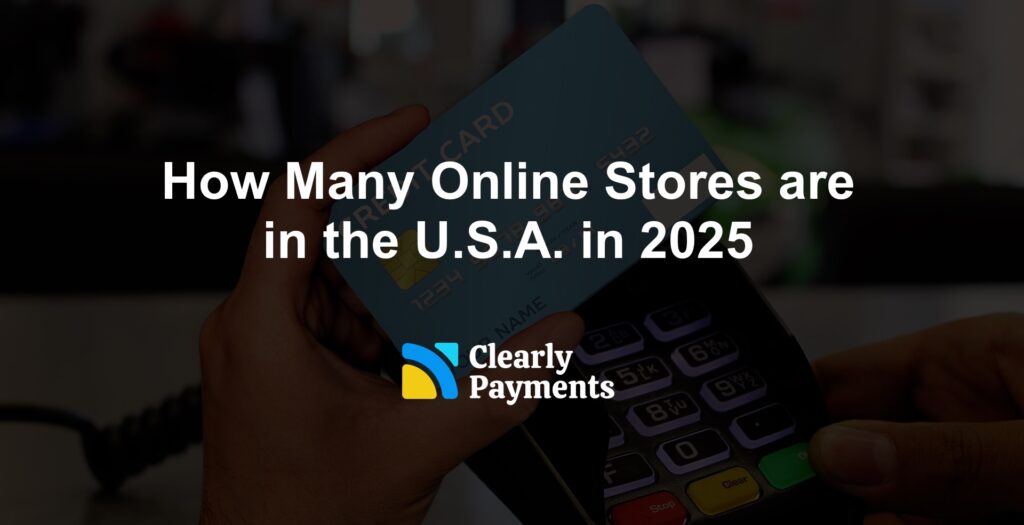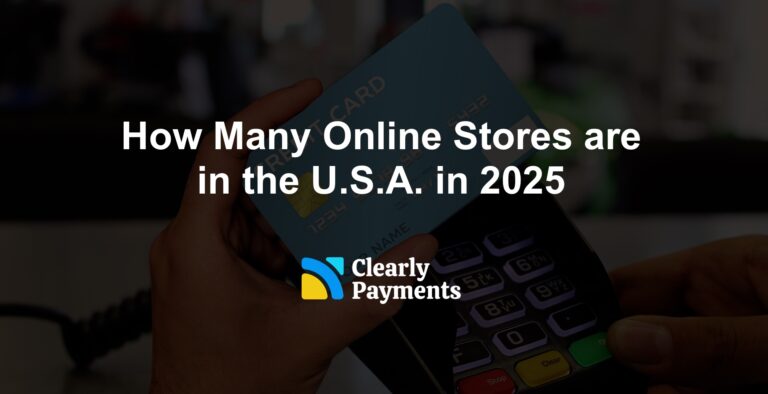The growth of eCmmerce has transformed the retail landscape over the last two decades. But in 2025, how many online stores are there in the United States? The short answer: millions. The long answer is more nuanced.
In this article, we’ll unpack the real numbers behind U.S.-based online stores, explore how they’re distributed by size and industry, look at the platforms powering them, and examine trends shaping their future.
Quick Stats: Online Store Landscape in the U.S.
In 2025, there are an estimated 2.7 to 3.5 million online stores in the U.S. This is compared to the total 32 million businesses in the USA. The mix includes scrappy startups, household names, and millions of people trying to make their first online sale.
The U.S. eCommerce ecosystem isn’t just growing—it’s evolving into a dense, digital bazaar where the next great store can launch with a few clicks.
| Metric | 2025 Estimate |
|---|---|
| Total U.S. eCommerce businesses | 2.7 – 3.5 million | Total U.S. businesses overall | 33.2 million |
| Online-only stores | ~2 million |
| Online stores on Shopify (U.S.-based) | 700,000+ |
| Amazon sellers (U.S.-based) | 1.1 million active |
| Etsy sellers (U.S.) | 2.4 million |
| WooCommerce stores (U.S. estimated) | 500,000+ |
| % of all retail sales via e-commerce | 23.5% |
Sources: U.S. Census Bureau, Statista
Defining an eCommerce or “Online Store”
When we talk about an “online store,” we usually refer to a website or platform where a business sells physical or digital products. This includes:
Branded e-commerce websites (e.g., store.com)
Marketplace sellers (Amazon, Etsy, eBay)
Niche platform sellers (e.g., Notion templates, Substack for digital goods)
Dropshipping stores
Print-on-demand operations
So while some “stores” are multi-million-dollar operations with warehouses and teams, others are side hustles managed from a laptop.
How Many Online Stores Start and Fail Each Year
Every year, an estimated 350,000 to 500,000 new online stores are launched in the United States. These include everything from side hustles and Shopify boutiques to full-scale brand launches and Amazon storefronts.
The low barrier to entry—thanks to affordable platforms, dropshipping, print-on-demand services, and marketplace access—makes starting an online store easier than ever. However, while the boom in new store creation is exciting, the failure rate remains high. Industry estimates suggest that over 80% of new e-commerce stores shut down or become inactive within the first 24 months.
Common reasons include lack of marketing know-how, poor product-market fit, underestimating customer acquisition costs, or simply losing interest. That said, the remaining 20%—especially those that survive past the 2-year mark—often grow into sustainable, profitable ventures. For many entrepreneurs, e-commerce is a proving ground: easy to start, tough to scale, and highly rewarding when executed well.
U.S. Online Stores by Type
The U.S. e-commerce market isn’t just made up of sleek Shopify storefronts or massive Amazon sellers. It’s a diverse ecosystem of millions of businesses with different approaches to selling online. Here’s how it breaks down:
1. Branded E-commerce Websites
These are independent stores powered by platforms like: Shopify, BigCommerce, WooCommerce, Squarespace, and Magento (Adobe Commerce)
An estimated 1.5–2 million stores fall into this category in the U.S., with Shopify taking the lion’s share. Shopify stores in the U.S. represent nearly 40% of Shopify’s global merchant base.
2. Marketplace Sellers
A different beast altogether, marketplaces host millions of individual sellers:
Amazon: Over 1.1 million U.S.-based active sellers
Etsy: About 2.4 million active U.S. sellers in 2025
eBay: Roughly 1.2 million U.S. sellers
Many of these sellers are counted in addition to branded e-commerce sites—they often do both.
3. Hybrid Stores (Multi-Channel Sellers)
More and more businesses are selling on their own site and via marketplaces. Tools like Shopify’s Amazon integration and POS systems enable seamless multi-channel selling. Roughly 35–45% of U.S. online stores fall into this hybrid category.
Distribution by Size
Not all online stores are created equal. While millions of people operate e-commerce businesses in the U.S., the majority of stores generate modest income, and a small percentage command a huge share of total revenue. Here’s how the market breaks down:
Estimated Distribution by Annual Revenue (U.S. Online Stores – 2025)
| Revenue Level | % of Total Stores | % of Market Revenue |
|---|---|---|
| <$50,000/year | 55% | 5% |
| $50k–$500k/year | 30% | 15% |
| $500k–$5M/year | 12% | 35% |
| $5M+/year | 3% | 45% |
Key Insight: While over half of all online stores earn under $50,000 per year, the top 3% generate nearly half of all revenue across the e-commerce landscape. These high-performing stores include:
Well-funded DTC (direct-to-consumer) brands with strong marketing and logistics
Established retailers that have built robust online operations
Power sellers on Amazon and Shopify with years of momentum
At the same time, the 55% earning less than $50,000 represent a massive ecosystem of:
Side hustles
Hobby sellers
Early-stage entrepreneurs
Niche passion projects
Together, they bring vibrancy, innovation, and product diversity to the market—even if they don’t always bring in massive revenue.
Platform Wars: Who’s Hosting These Stores?
Here’s a breakdown of the most popular e-commerce platforms among U.S. online stores in 2025:
| Platform | U.S. Market Share (Est.) |
|---|---|
| Shopify | 35% |
| WooCommerce (WordPress) | 25% |
| Wix/Squarespace | 15% |
| BigCommerce | 5% |
| Magento | 4% |
| Custom-built | 6% |
| Other | 10% |
Shopify’s dominance is particularly strong among DTC (direct-to-consumer) brands and startups.
U.S. Online Stores by Industry
E-commerce is not one-size-fits-all. While fashion and electronics dominate headlines, the U.S. online retail ecosystem spans dozens of verticals, each with its own dynamics in terms of number of stores, customer behavior, and growth.
Here’s a breakdown of online store distribution by industry, along with some revealing stats.
U.S. Online Stores by Industry – Summary Table
| Industry | Estimated Store Count | Avg. Order Value | Growth Rate |
|---|---|---|---|
| Fashion & Apparel | 1.2 million+ | $75–$120 | 10% |
| Beauty & Personal Care | 500,000+ | $60–$85 | 12% |
| Food & Beverage | 300,000+ | $40–$90 | 13% |
| Home Goods & Furniture | 200,000+ | $150–$800+ | 9% |
| Electronics & Accessories | 100,000+ | $100–$300 | 7–8% |
| Digital Products/Courses | 400,000+ | $25–$300 | 15%+ |
| Toys & Hobbies | 150,000+ | $40–$100 | 8–10% |
| Pet Products | 120,000+ | $50–$120 | 11% |
Key Takeaways
The top three industries by number of stores are Fashion, Beauty, and Digital Products.
Industries like Furniture and Electronics have fewer stores but higher order values.
Digital products and food are among the fastest-growing, due to low friction and repeat purchase potential.




